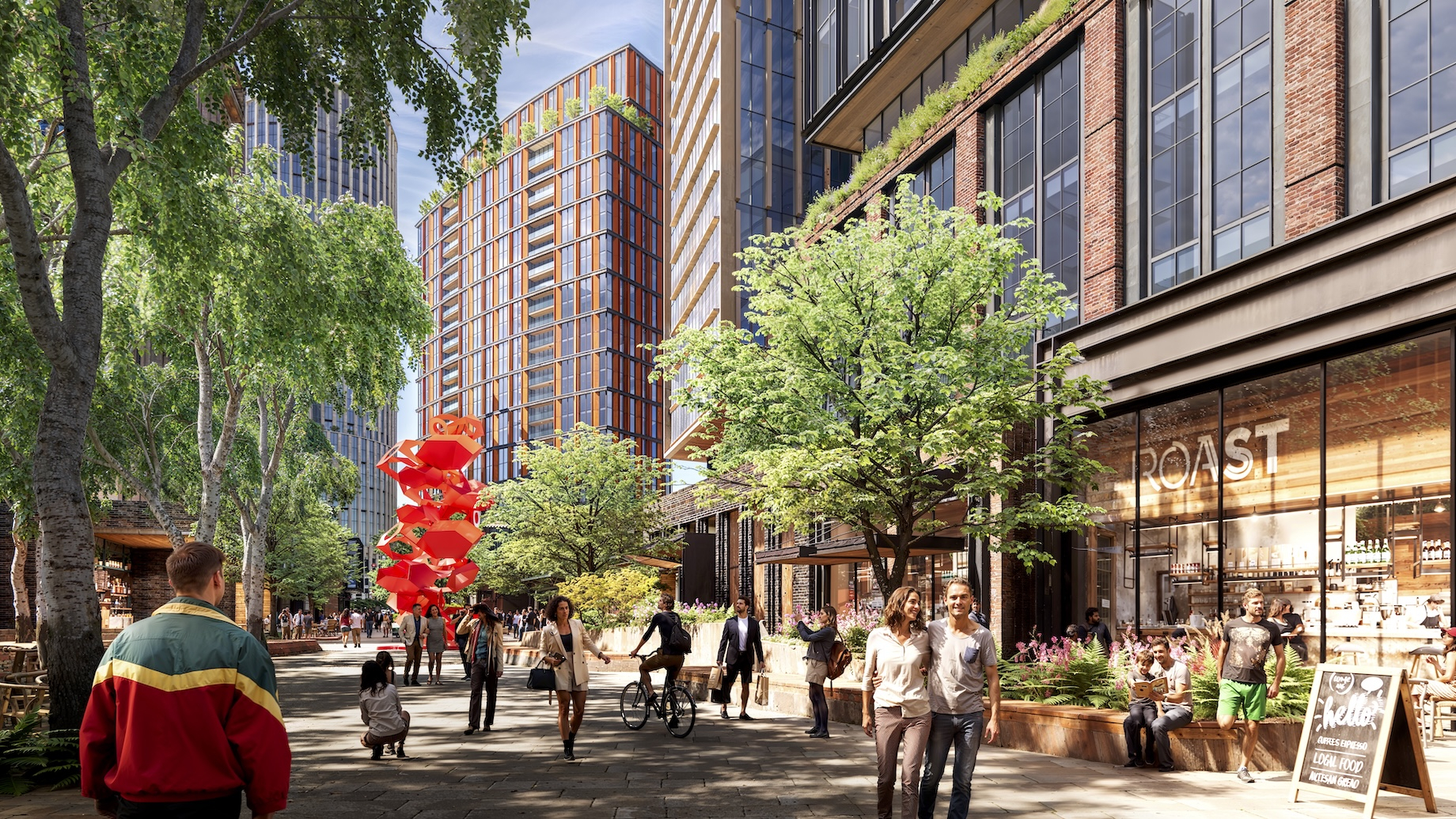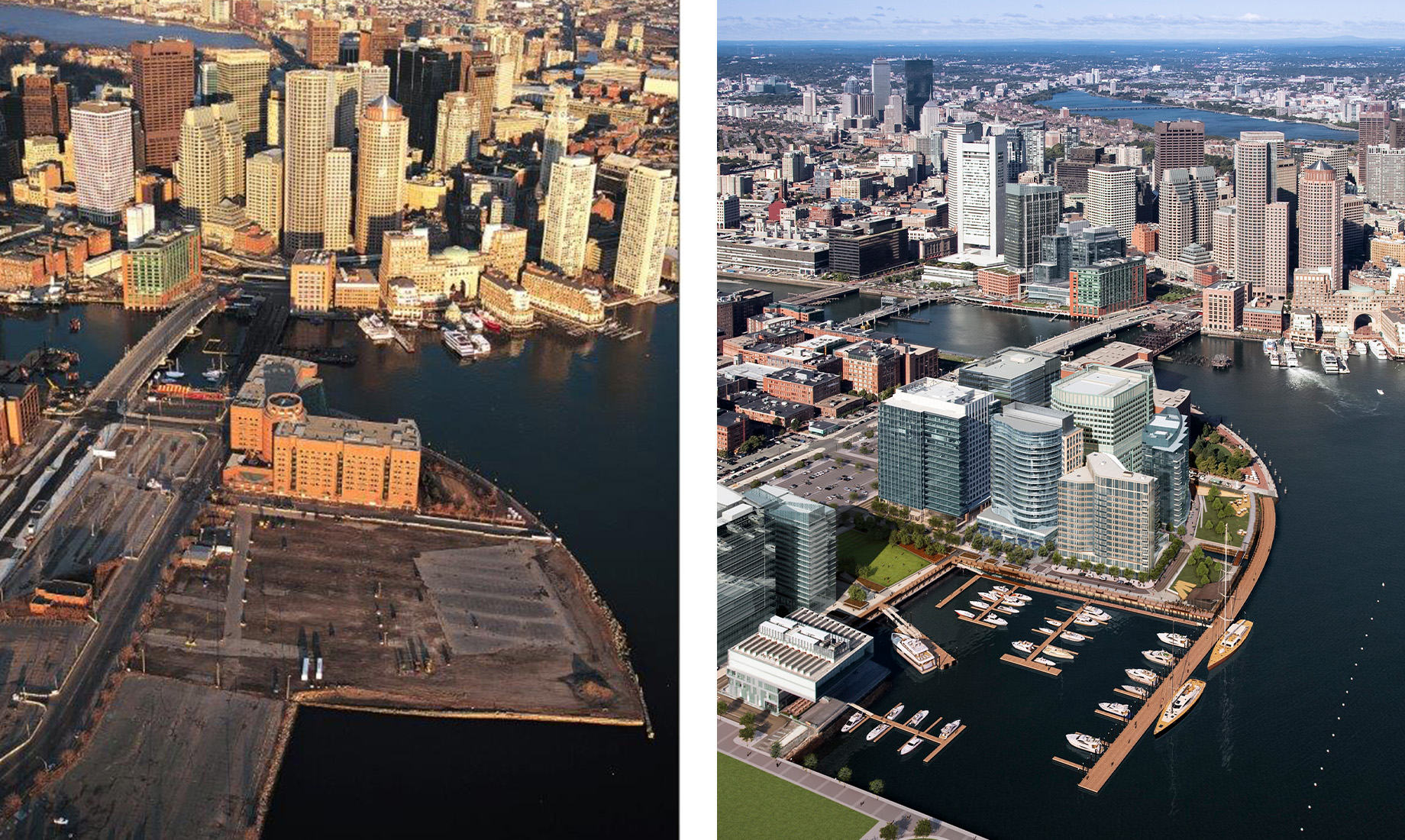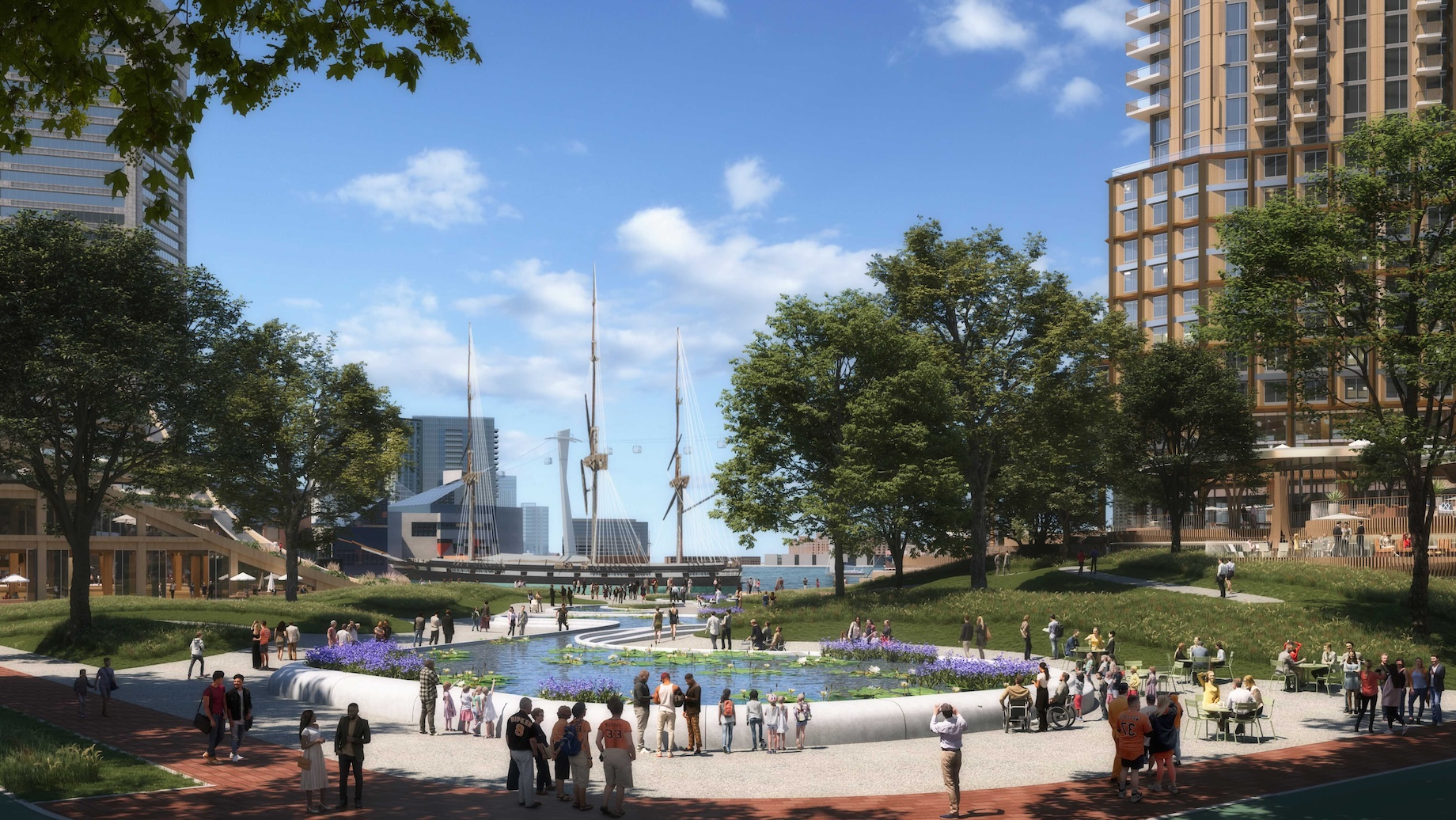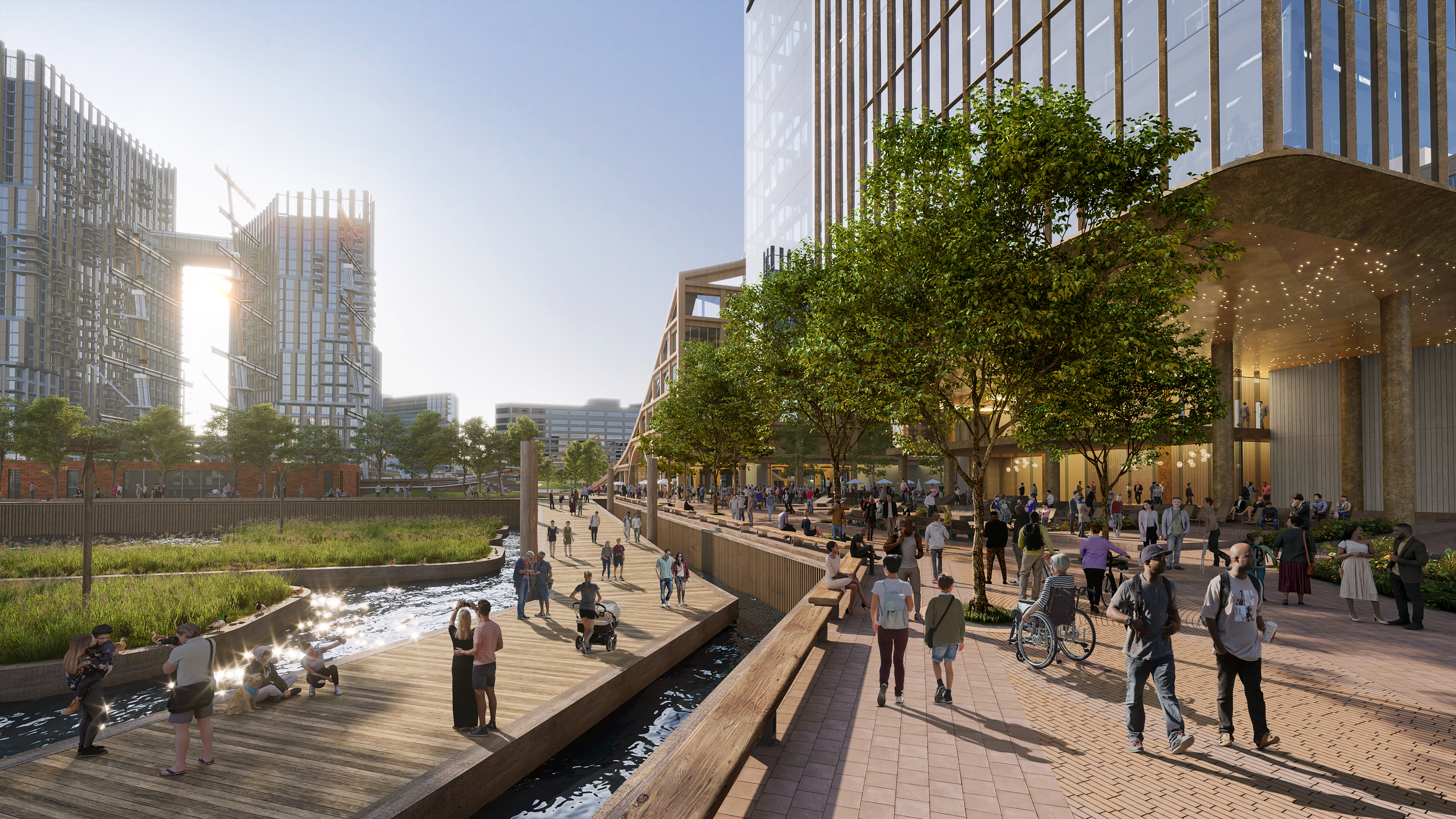The Short Version
- Large-scale, mixed-use projects face rising costs, complex approvals and mounting infrastructure challenges.
- The Fallon Co.’s $3B-plus East Bank in Nashville and $4B Fan Pier in Boston exemplify how patience, partnerships and planning drive success.
- Smart curation of residential, retail and public spaces creates districts that thrive beyond office hours and event days.
- Anchors like stadiums and waterfronts catalyze billion-dollar investments but require activation strategies to stay vibrant year-round.
- Developers are leaning on phased timelines, diversified revenue and public-private partnerships to make the numbers work.
Developers Navigate Capital Stacks, Timelines and Approvals To Deliver Billion-Dollar Destinations
Developers are battling higher costs and approval processes that are fraught with hurdles, but those challenges compound themselves for mixed-use megaprojects.
“The biggest challenges today are threefold: the cost and availability of capital, the time and financial burden associated with permitting new construction, and building consensus among multiple stakeholders,” said Fallon Co. CEO Michael Fallon. Although none of these hurdles are new, developers also face higher interest rates and entitlement processes that can stretch for years. Meanwhile, insurance costs are climbing, climate risks continue and utility constraints are starting to dictate feasibility, he added.
ALSO CHECK OUT: Mixed-Use Megaprojects: Turning Locations Into Destinations, Featuring Penn District, Legacy Park, Suffolk Downs and Fields
Fallon’s company is entering the final phase of its $4 billion Fan Pier development in Boston, and the city of Nashville has selected the firm to develop the more than $3 billion East Bank on 30 acres surrounding a new stadium on the way for the NFL’s Tennessee Titans.
Such large-scale projects upward of $1 billion develop their own gravity, and they become even more complex when the number of uses reaches three or four, noted Mark Knott, vice president of development and strategic consulting firm Project Management Advisors. “It’s a big rock to push uphill, and it definitely takes time,” he said.
East Bank
Location: Nashville, Tennessee
Developer: The Fallon Co.
Details: The city of Nashville selected The Fallon Co. to develop 30 acres surrounding the coming Titans stadium. A key feature will be the Music City Mile, a raised thoroughfare lined with retail that allows pedestrians to move through the neighborhood without encountering cars. The over $3 billion project will break ground in 2026. East Bank is part of a larger public-private initiative to transform 170 acres of Cumberland River waterfront.

East Bank Image courtesy of The Fallon Co.

East Bank Image courtesy of The Fallon Co.
Getting the Mix Right
One of the positives to large-scale mixed-use projects is the diversity. Additional components – housing, retail, restaurants, entertainment, office, parks or community space — give a project a 24-hour clock and create a self-sustaining economic hub. “Megaprojects are certainly challenging because of the nature of the size and the cost and the complexity, but that complexity is a differentiator in the market, with the ability to build on itself,” said Knott. Multiple income streams can boost the economic model and revenue resiliency, and the different uses create synergy, drive cross-traffic and repeat visits.
However, developers must curate megaprojects and connect the uses to attract both people and commercial tenants. “A neighborhood where residential drives retail, hospitality activates office and open space ties it together will weather cycles and create lasting value,” said Fallon. At Fan Pier in Boston, for example, each phase reinforced the next. The company recently topped off Fan Pier’s final building, the 122-unit One Harbor Shore condo project.
Fan Pier
Location: Boston
Developer: The Fallon Co.
Details: This $4 billion mixed-use waterfront development sits on 21 acres. The project has created 3 million square feet of residential, commercial and retail space, along with a variety of public spaces and transit options. It represents one of the largest-ever private investments in the city of Boston.

Fan Pier before and after Photos courtesy of The Fallon Co.
Megaproject developers are creating not only places but also experiences. According to Fallon, a retail activation and merchandising plan that incorporates early retail anchors is crucial. He also called for wider sidewalks, smaller-format retail offerings, programmed open spaces and curated cultural and entertainment offerings. “People want places that feel like a neighborhood but have elements of a bustling urban environment,” said Fallon. Weather and seasonality also shape how those environments function, which makes outdoor activation, flexible amenities and entertainment essential, he added.
Anchors That Drive Momentum
Although each project is unique to its location and has different demand drivers, there are go-tos. “All the cakes are baked a little differently, but they have a lot of the same ingredients,” said Knott. Chief among them is a strong anchor, such as a stadium, convention center, riverfront park or transit hub.
More From C+CT
March 2025: Development Is Lining Up Behind Seattle’s Light-Rail Push
July 2024: Cities Are Calling for Mixed-Use Development to Connect Convention Centers to Their Communities
May 2023: New Sports Venues and the Master-Planned Districts Growing Around Them
Development around sports stadiums has been a big theme over the past decade. For example, owners are working to redevelop the 12 acres of parking that surround the United Center in Chicago, home to both the NBA’s Bulls and NHL’s Blackhawks. The proposed master plan, called The 1901 Project, would inject $7 billion in private investment to transform the area with housing, office, a hotel, retail, entertainment and public space.
“You need some sort of anchor and a story, and it’s got to be something special,” noted MCB Real Estate managing partner and co-founder P. David Bramble. In the case of the $900 million Harborplace, for which his company recently received site approval, the primary anchor is the public waterfront. “From there, it’s really about creating a vibrant, connected, mixed-use atmosphere,” said Bramble. Plans for Harborplace, which is part of Baltimore’s $3 billion waterfront redevelopment, include retail, office, an amphitheater, residential, public space and a large public promenade.
Harborplace
Location: Baltimore
Developer: MCB Real Estate
Details: The $900 million, 20-acre waterfront site will feature four mixed-use buildings, including retail and office space; a 2,000-seat outdoor amphitheater; parks; promenades; and approximately 900 residential units. Harborplace recently received site approval and is expected to break ground in late 2026. It’s part of a $3 billion, 231.5-acre transformation underway along the Baltimore waterfront.

Harborplace Image courtesy of MCB Real Estate

Harborplace Image courtesy of MCB Real Estate
Beyond Game Day: Keeping Districts Active Year-Round
The nucleus for the 100-acre OCVibe mixed-use district development in Anaheim, California, is the Honda Center, home to the NHL’s Ducks. The venue draws more than 1 million people to hockey games and other events throughout the year. “The challenge is that even the most successful arenas are not lit up every night,” said OCVibe senior vice president of real estate operations Scott Frick. The developers plan to bring in around 30 restaurants, but those can’t survive on evening sports team business and concert business alone. “We’ve taken the opportunity to lay out a typical week to see where the gaps are that we need to plug to ensure traffic and ensure there are people here to keep the district active,” said Frick.
In addition to the 18,000 seats at the Honda Center, OCVibe will host smaller venues that can serve a diverse event calendar. Additionally, the project will include office, residential and hotels that will drive daytime traffic and activity. “We can’t just appeal to sports fans,” said Frick. Residents and visitors of Orange County want to see and interact with different offerings, such as art and music and open space, and they want great places to live, he added.
OCVibe
Location: Orange County, California
Developers: The Samueli family and OC Sports & Entertainment
Details: OCVibe will reimagine the downtown Anaheim experience by turning 100 acres surrounding the Honda Center arena into an accessible, walkable district with art, architecture, nature, dining and entertainment.

OCVibe Images above and at top courtesy of OCVibe
Making the Numbers Work
Megaprojects are not for the faint of heart. They’re complex, expensive and lengthy. Large-scale, mixed-use projects can take several years, even decades, before even a single shovel hits the ground. So how do developers keep these projects on track? In addition to diverse revenue streams and phased development, other keys include assembling a capital stack with patient money and forming strong public-private partnerships.
MORE FROM C+CT: Mixed-Use Capital Stacks: How MCB Real Estate Finances Large Projects
These days, capital is more selective and investors are looking for projects that show diversified revenue streams and the potential for long-term value gains. “That’s driving a move toward phased delivery and partnerships with investors who share a patient, multicycle outlook,” said Fallon.
Additionally, public-private partnerships — including governments, quasi-governmental authorities and institutions — are playing bigger roles as development partners. Tools like tax-increment-financing districts, payments-in-lieu-of-taxes programs and green bonds are increasingly important to cover public realm and infrastructure costs. Fan Pier, for example, used Massachusetts’ Infrastructure Investment Incentive Program bond program to assist in upfront costs and project financing.
2025 ICSC Excellence in Community Advancement Awards: 5 Transformative Public-Private Partnerships
Financing large projects is always challenging, and it’s more difficult today, given the higher costs and a regulatory and approval environment that often adds significant time to a project. Harborplace, for example, needed a public referendum in order to move forward, and that added time and cost to the process. Baltimore voters approved the referendum in 2024, and the MCB Real Estate expects to start construction in late 2026.
How do you get megaprojects to pencil out? “There isn’t a magic way to get the numbers to work that everybody’s following,” said Knott. Selling off parcels and bringing in partners helps with the capital stack and helps manage risk. Ultimately, the path forward for megaprojects starts with fundamental questions, he said: What is your end goal? What resources are you bringing that you can execute well, and what are the pieces that are missing? How do I find the right partners, and what’s the right vehicle to bring the right people to the table to get those done?
Developers also agree that success involves good real estate, strong partners and the right team. “When you’re building a 100-acre mixed-use district with all different asset classes, you’ve got to really assemble a team that is smart on the economics of each of those,” said Frick. “You’ve got to bring in creative thinking to understand how you can create baseline value for each of those pieces of real estate and then also add the secret sauce and the connection to grow the value for the district as a whole.” That, he added, requires building a diverse pool of talent that also has the ability to think creatively about how the different components work together.
By Beth Mattson-Teig
Contributor, Commerce + Communities Today